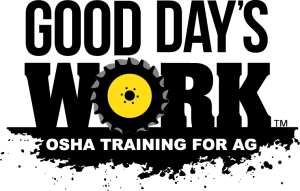Introduction to Air Hammers

Air hammers, or pneumatic hammers, are powerhouse tools that bring precision and power to a wide range of tasks. Whether you're breaking through concrete, cutting metal, or removing rust, these versatile tools are a must-have for construction pros, auto repair experts, and even ambitious DIYers. But with great power comes great responsibility—using them improperly can lead to serious injuries. Mastering their operation and following key safety tips is the secret to getting the job done right and staying safe.
What makes air hammers so impressive is their adaptability. Need to shape metal or pop off some tiles? A lighter, standard air hammer has you covered. Tackling tougher jobs like chipping concrete or loosening stubborn bolts? Heavy-duty models are up for the challenge. Swap in the right attachment, and you can drive rivets, separate ball joints, or even carve intricate designs into stone. That’s the kind of versatility that makes them a favorite for both professionals and weekend warriors.
But don’t forget, power isn’t everything. To truly harness the potential of an air hammer, you need both skill and respect for the tool. Get it right, and there’s no limit to what you can achieve.
Recognizing the Risks



- Vibration-Induced Injuries
Using equipment for too long? It could lead to Hand-Arm Vibration Syndrome (HAVS), impacting your blood flow, nerves, and muscles.
- Eye Injuries
Flying debris is no joke—without proper eyewear, you’re risking serious, lasting damage.
- Hearing Loss
Loud noise can sneak up on you. Skip the ear protection, and you could end up with permanent hearing damage.
- Lacerations and Bruises
Slips, falls, and mishandling equipment can lead to painful cuts and bruises. Stay sharp and handle with care!
Mastering Air Hammer Safety

1. Gear Up with the Right PPE
Safety first! Suit up with the right protective gear every time you use an air hammer:
- Safety Glasses and Face Shield: Keep flying debris and fragments far from your eyes.
- Ear Protection: Block out the roar with earmuffs or earplugs—your ears will thank you later.
- Anti-Vibration Gloves: Protect your hands from those intense vibrations and accidental slips.
- Steel-Toe Boots: Don’t let falling objects ruin your day—protect your feet.
2. Master the Tool with Care
Air hammers pack a punch, so proper handling is key.
- Always grip with both hands for steady control.
- Go easy at first—start slow with lower air pressure and increase as you get comfortable.
- Keep a balanced stance to stay in control and avoid surprises.
3. Stay Sharp While Operating
When it’s time to get to work, stay focused.
- Double-check the chisel or bit is locked in place before you start.
- Always point the air hammer away from yourself and others, even when it’s off.
- Never use the tool in wet conditions to avoid electrical or operational hazards.
4. Show Your Tool Some TLC
A well-maintained air hammer works better and lasts longer.
- Perform routine inspections for signs of wear or damage on the tool, hoses, and accessories.
- Keep it moving smoothly with regular lubrication.
- Store it smart—keep your air hammer in a dry, secure spot to ward off rust and corrosion.
Lessons from Real-Life Incidents
Case Study 1: Why PPE Matters

Picture this: a construction worker is using an air hammer when suddenly, debris flies straight into his hand, causing an injury. The problem? He wasn’t wearing protective gloves. This incident is a powerful reminder that PPE isn’t just a suggestion—it’s a lifeline. Consistently wearing the right gear can make all the difference in preventing workplace injuries.
Case Study 2: Securing Tools Saves Lives

In another incident, a chisel came loose from an air hammer, flying dangerously and injuring a worker. The cause? The chisel wasn’t securely attached. This could’ve been avoided with a quick inspection and proper attachment. It’s a simple step that can prevent serious accidents.
Best Practices for Air Hammer Safety

- Comprehensive Training
Operators should get hands-on training and fully understand how to use air hammers safely.
- Stay One Step Ahead
Regular workplace safety audits can catch hazards before they become problems. Be proactive, not reactive.
- Safety Reminders Everywhere
Post clear, eye-catching signs about PPE, proper handling, and operating guidelines right where air hammers are used. A quick reminder can prevent big mistakes.
- Open the Conversation
Encourage workers to share their safety concerns and improvement ideas. A culture of collaboration makes everyone safer.
Call to Action
 Now you’re ready to use air hammers like a pro! But workplace safety isn’t a solo mission—it’s something we all share. Got tips, experiences, or questions about air hammer usage? Share them with us!
Now you’re ready to use air hammers like a pro! But workplace safety isn’t a solo mission—it’s something we all share. Got tips, experiences, or questions about air hammer usage? Share them with us!
Jump into the comments and join the conversation. Every safety tip, no matter how small, helps us create workplaces that are safer and more efficient for everyone. Let’s work together to make a real impact—one step at a time!


